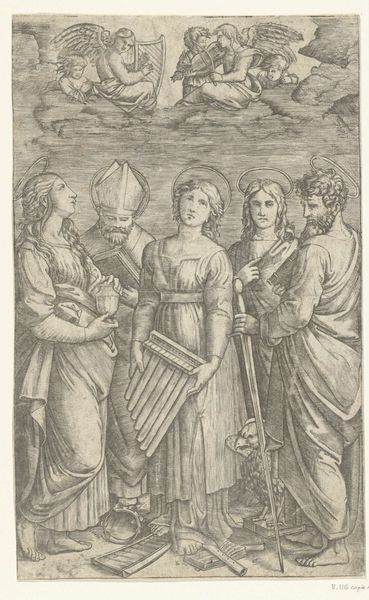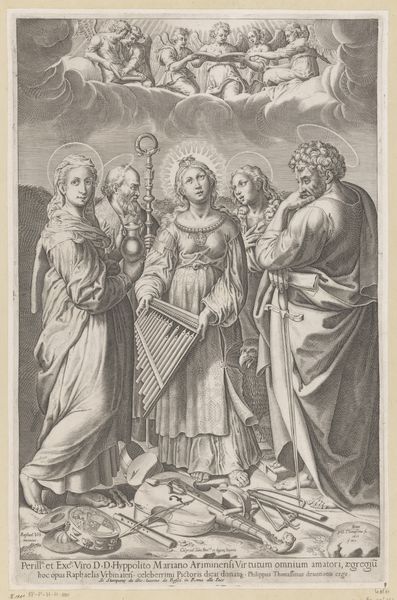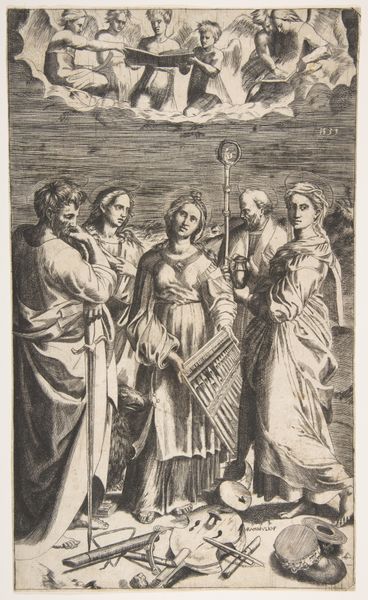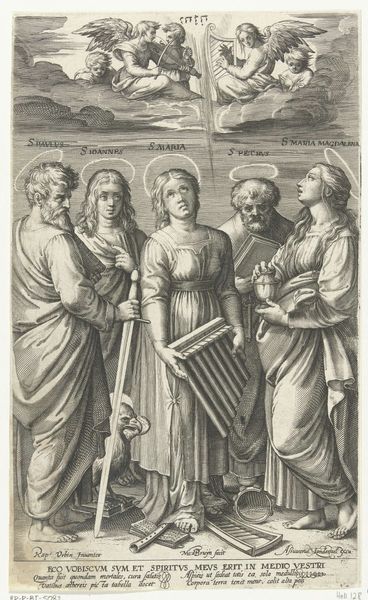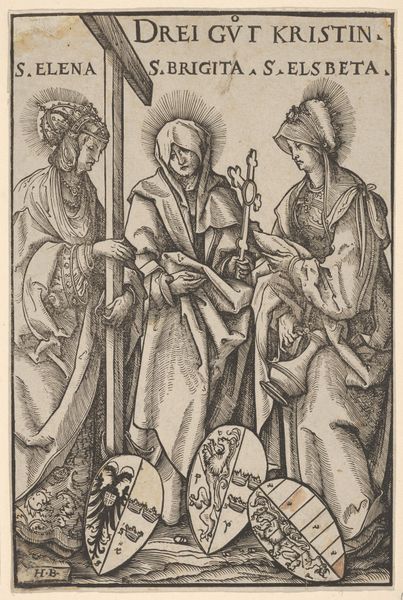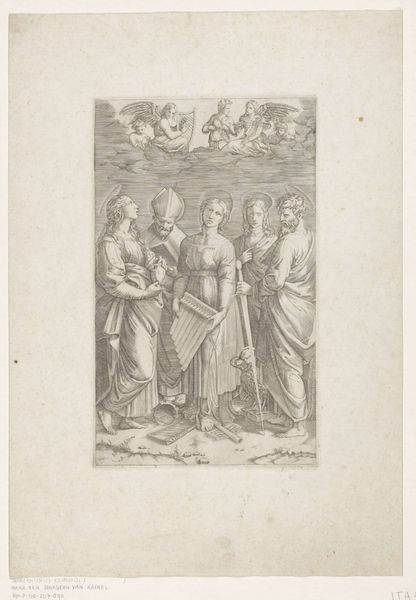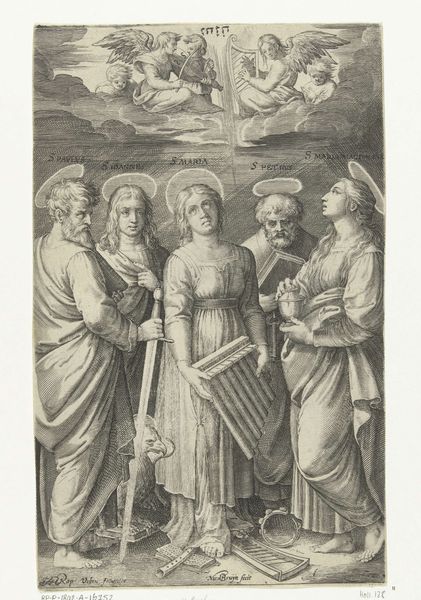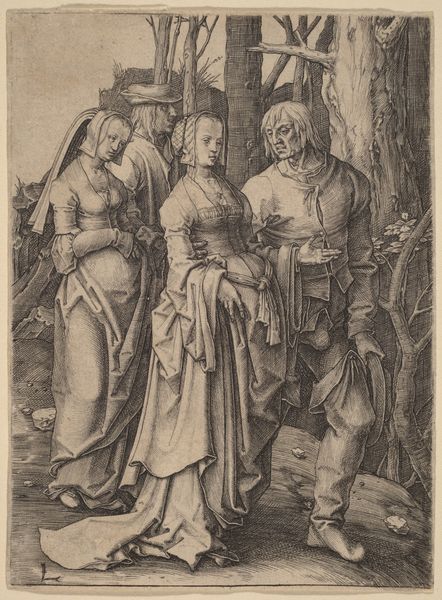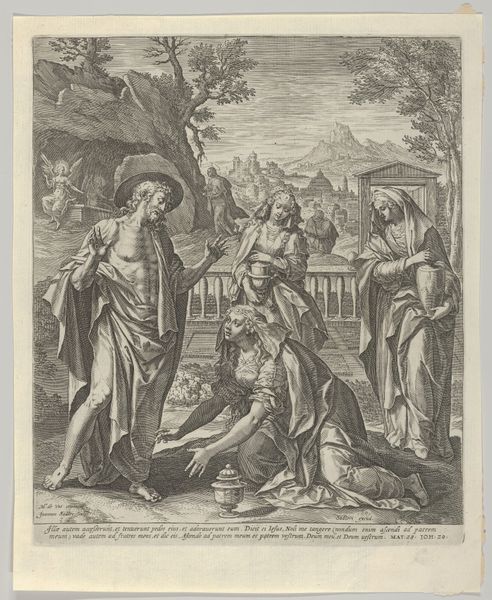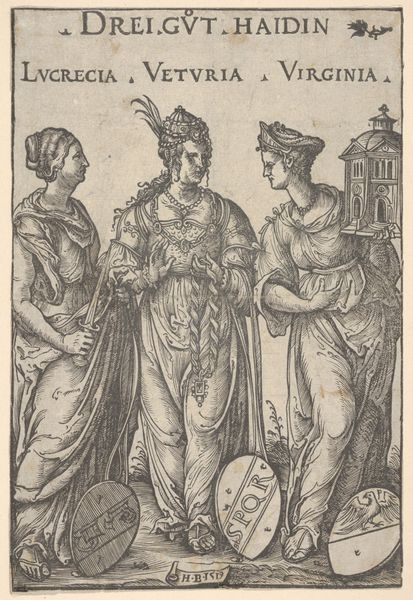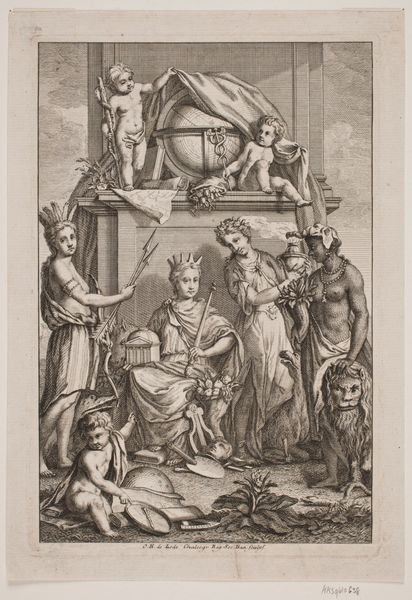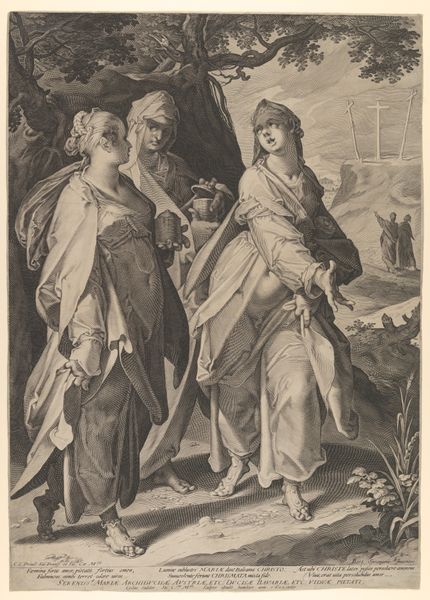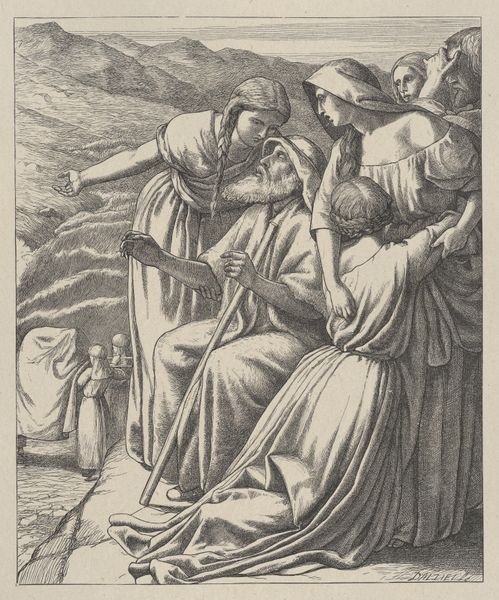
St Cecilia holding an organ, flanked by St Paul, St John the Evangelist, St Augustine and Mary Magdalen, musical angels above 1500 - 1534
0:00
0:00
drawing, print, engraving
#
drawing
# print
#
figuration
#
line
#
portrait drawing
#
history-painting
#
italian-renaissance
#
engraving
#
angel
Dimensions: 10 7/16 x 6 1/4 in. (26.5 x 15.8 cm)
Copyright: Public Domain
Curator: Look at this Italian Renaissance engraving currently housed here at the Met. It’s entitled “St Cecilia holding an organ, flanked by St Paul, St John the Evangelist, St Augustine and Mary Magdalen, musical angels above,” attributed to Marcantonio Raimondi, dating back to between 1500 and 1534. Editor: It's a dense composition, certainly. The figures seem a bit stiff, almost as if posing for a very serious group photo. The line work gives a flattened feel to the bodies; look at the drapery. Curator: Well, engravings are inherently about line and their multiplication as images for distribution; this was made to circulate. Raimondi was key in popularizing classical and Raphael’s designs through print. It enabled the masses to have access to artworks, but through this lens, impacting the function of religious imagery. Editor: I’m intrigued by St. Cecilia’s organ. I assume it's a symbolic instrument representing heavenly music and harmony, but this one seems so mundane, like it’s been repurposed, cast aside even. Look at how it sits on the floor—its production details are rendered so plainly in metal and wood, compared to, say, the idealized angel’s instruments above, creating this kind of split aesthetic between human and divine labor. Curator: You know, St. Cecilia has historically represented music in a more elevated way, and that relates to a cultural investment in sacred spaces. Printmaking created income for artists but also shifted artistic agency toward publishers, often diluting any individual style. Raimondi aimed for fidelity, which led to some loss of expression and that stiffness you see. Editor: Perhaps this flattening speaks to how Renaissance workshops functioned. Consider the collaborative nature of the enterprise; while he might be credited for the final image, countless artisans labored to translate, produce, and disseminate such artwork. And if such prints are circulated among the masses, is art fulfilling some greater civic good by engaging everyday people in high culture? Curator: That’s exactly right, it is. But also remember that these prints were instrumental for propagating cultural narratives of power as the patrons expected, whether religious or political. They affirmed institutions as much as the devotion they triggered among viewers. Editor: Right, and by mechanically reproducing the images through cheaper, easier materials, they made sure to stay in production, even outside artistic intent or control. Curator: Fascinating, isn’t it, how one engraving captures art, faith, and political agenda simultaneously? Editor: Indeed. The piece offers much to consider regarding how and why it came into existence and whose interests it truly served, far beyond its surface beauty.
Comments
No comments
Be the first to comment and join the conversation on the ultimate creative platform.
